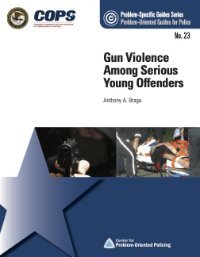By Philip J. Cook, and Jens Ludwig
The evidence base for the study of guns and violence begins with data on such fundamental issues as the number and distribution of guns, the number of people shot each year in criminal assaults, and the frequency of gun use in self-defense. It seems that these simple descriptive statistics should be readily available, and in fact the rhetoric of the debate over gun control in the United States routinely includes reference to 300 million guns, or 100,000 people who are shot each year, or 2.5 million defensive gun uses. But it turns out that such statistics should be viewed with considerable skepticism. Developing reliable estimates of basic facts in this arena is surprisingly difficult, even with the best of intentions. Even surveys that meet the highest standards of current practice may produce heavily biased estimates. The results discussed here should encourage skepticism and engender what might be called “plausibility tests” – common-sense comparisons of the resulting estimates with other sources of information. Too often the review of scientific contributions is like appellate review of a criminal conviction – the court focuses on just the process rather than the outcome. For policy-relevant work it is important to test the conclusions against what else we know about the reality of the situation.
San Diego: Small Arms Data Observatory, 2014. 14p.





















